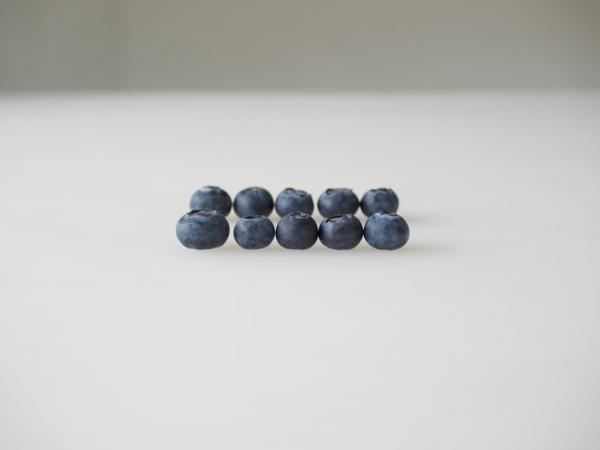How Much Food Will a Dollar Buy?

Ten organic blueberries? A foot-high stack of ramen? A necklace made from candy? How much food will a dollar buy and how much of it is healthy? How much of it should even be considered food?
Those are some of the questions photographer Jonathan Blaustein explores in his project, "The Value of a Dollar." When you consider that the USDA estimates that schools have about a dollar available to spend on the food in each student's lunch, Blaustein's photographs of everyday food items bring home the challenges of serving a nutritious meal on such a tiny budget.

It was a cheeseburger in a local fast food restaurant near his New Mexico home that got Blaustein thinking about the value of food and the seemingly contradictory messages conveyed in its pricing.
"On one menu they had a cheeseburger for a dollar," he said. But what caught his attention was another menu that featured a double cheeseburger for the same price. "How is that possible?" he thought. The additional piece of meat and the extra slice of cheese didn’t change the price at all. So Blaustein decided to document what he was seeing. Seeking to portray food in the same light - literally – as the food industry, Blaustein painted the walls of his apartment white and used a sharp lens and a shallow depth of field to create the same illusions used in commercial food photography.
"I thought, 'Well, I know what they tell me it looks like,' he said. 'What about what it actually looks like?’”

As he pursued the visual dimensions of a dollar's worth of food, deeper questions began to emerge as to how food is valued and how its pricing often seems counterintuitive. Why, for example, did a dollar purchase only ten blueberries grown in the United States, but nearly twice as many that came from Chile, about 5,000 miles away?


Why did the most highly processed foods like mechanically extruded noodles, white bread, and even candy – foods requiring a lot of energy to produce – seem significantly cheaper than raw, unprocessed foods like fresh fruits and vegetables?

These questions open into larger issues that influence the availability and quality of food, including government subsidies, global trade, "cheap" energy, and workers’ rights.
The visual results of Blaustein's work are so arresting that it has been featured in blogs and publications around the world, attracting the attention of the New York Times and National Public Radio.
For more information on issues and solutions related to school lunch, including the finances behind positive change, see the Center's Rethinking School Lunch Guide.




